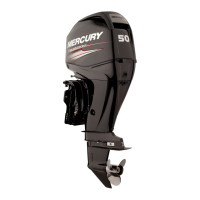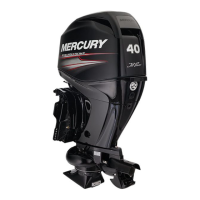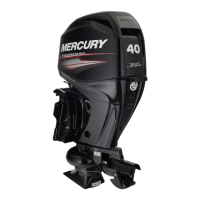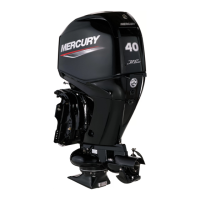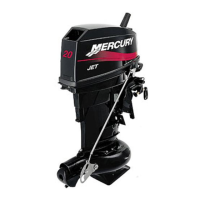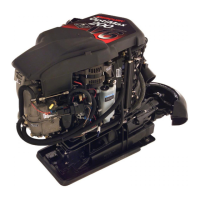GENERAL INFORMATION and SPECIFICATIONS - 1-1390-817643R1 DECEMBER 1996
BOAT TEST CHART (Example)
Propeller
Diameter
and
Pitch
Acceleration
Time
in Seconds
WOT
MPH
*
WOT
RPM
*
Water
Condition
Air
Temperature
(
°F)
Comments
Propeller Break Loose Wind during Run
During
Acceleration
Direction
During
Turns
MPH
10
1
/
8
” x
15
10
1
/
4
” x
5450
5700
35
34
7
6
slight
no
no
no
5
5
3”
chop
73
73
*WOT is wide-open-throttle
5. An acceleration test can also be performed if desired.
Start the test with boat motionless in the water and out-
board in neutral. A stop watch should be started as the
throttle is quickly pushed to WOT (wide-open-throttle).
Stop the watch as the speedometer needle sweeps
past 20 MPH (32 km/hr). Several runs should be made
to assure a good average.
6. Prop “break loose” (sudden higher RPM), if not exces-
sive, in some cases can be beneficial during accelera-
tion. If undesirable “break loose” occurs, it can be de-
creased by trimming the outboard further under. If it
remains excessive with all similar propellers, the out-
board must be lowered.
7. It is suggested that all applicable data be recorded on
a chart (such as that illustrated, above) and retained
for future reference.
8. After several propellers of different pitch and/or design
have been tried, select one that best serves the gener-
al purpose of the boat. The selected propeller should
enable the engine to operate within its recommended
full throttle RPM range, without excessive propeller
“break loose” during acceleration or turns. A second
propeller that would make both a suitable spare or a
special purpose alternate might also be desirable.
NOTE: A higher pitch often gives best top speed, but the
next lower pitch gives adequate top speed with much better
acceleration.
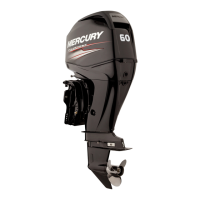
